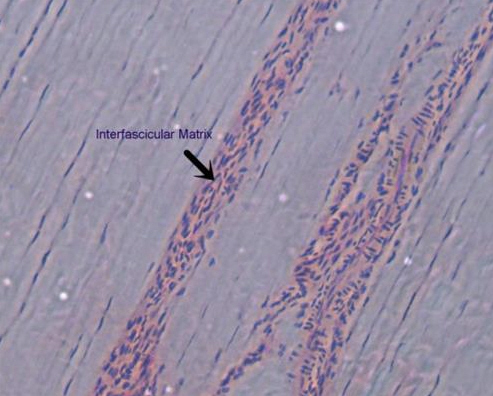Experiments in the past have shown that stiffening in aging tendons, specifically the stiffening and decreased resistance to repetitive loading of the tissue which holds tendon fiber bundles in place, is the problem. Tendon fiber bundles are surrounded by the interfascicular matrix (IFM), made up of tissue which enables the fiber bundles to slide past each other and stretch independently. In horses, the superficial digital flexor tendon (SDFT), which is used to store energy for propulsion, requires greater stretching of the IFM, than in the common digital extensor tendon (CDET) which aids the positioning of the leg.

Credit: Queen Mary, University of London
While the IFM is more elastic, recovering better after loading in the SDFT it is prone to injury in older age because of the greater strain it is put under, and the stiffening and decreased ability to recover that results. The SDFT is very similar to the human Achilles tendon and so the results of this study can be directly applied to Achilles injury in people. This new discovery implies that injuries to different tendons could be treated differently and that new treatments could be developed to prevent injuries in older people.
Dr. Chavaunne Thorpe, from QMUL’s School of Engineering and Materials Science, said, “We now have a much greater understanding of what happens tendon structure as people get older and the role that plays in injuries. This information could be used to develop measures to reduce the risk of tendon injury or to speed recovery.”






Comments